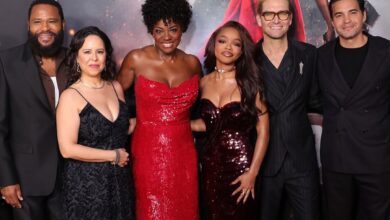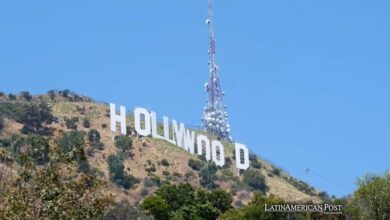Anniversary Of The Arrival Of Man On The Moon: 5 Films About Moon Landings
Today we celebrate the anniversary of the arrival of man on the moon. It is 53 years since the Apollo 11 mission landed on the moon on July 20, 1969. To celebrate, we bring you 5 movies about the moon landings.

Photo: Pixabay
LatinAmerican Post | Juliana Rodrígiez Pabón
Escucha este artículo
Leer en español: Aniversario de la llegada del hombre a la luna: 5 películas sobre alunizajes
What started as a race between two potential, then was a great step for humanity. It is about the arrival of the man on the moon, which divided the history of humanity in two and allowed directors and screenwriters to imagine new stories about space exploration. A little over half a century ago, the United States and the Soviet Union were two powers fighting not only for superiority in arms but also for the pinnacle of technological development. By 1969, both countries were well on their way to landing a man on the moon. The Soviet Union had excelled in placing satellites and had sent the famous dog Laika on a first space exploration.
On July 16, 1969, then, NASA's Apollo spacecraft left Florida on its fifth mission. On July 20 of the same year, astronauts Neil Armstrong and Edwin Aldrin would become the first men to walk on lunar soil. This milestone in human history was televised and forever changed our perception of the universe. It also influenced the cultural products from then on, which would imagine new universes and for which it would be possible to travel through space. On the 53rd anniversary of this event, we recommend five films about the moon landings.
"Journey to the Moon", Georges Méliès (1902)
The truth is that long before humanity knew that it was possible to travel to the moon, the cinema had already imagined it. "Journey to the Moon" is a French film that dates back to the early years of cinema. It lasts just over 14 minutes, it is silent and black and white. In it, its director, Georges Méliès, imagines a trip to the moon. It's a heartwarming comedy as it imagines trips to the moon the way trips happened in the early 20th century. This is not a film ahead of its time only because of what it imagines but also because of its cinematographic technique, a precursor to special effects, and because of the genre it inaugurates: science fiction. A century after its release, director Martin Scorsese pays tribute to this movie with his film "Hugo".
"2001: A Space Odyssey", Stanley Kubrick (1968)
A year before the arrival of man on the moon, another reference to science fiction is released: "2001: A Space Odyssey". Directed by Stanley Kubrick, this film goes beyond the story of a moon landing, as it is not only a futuristic film but also reviews the past, the origin of man. Its director wrote the script by renowned science fiction writer Arthur C. Clarke, on whose story "The Sentinel" the story is based. "2001: A Space Odyssey" was, like the first film on our list, a precursor to several cinematographic techniques that would later be the basis for many advances in terms of special effects. It was also produced at the height of the space race and the moon landing scene, accompanied by the "Blue Danube" waltz, was the subject of many theories after man landed on the moon.
Also read: 40 Years Of "Blade Runner": 5 Movies To Watch If You Liked It
"The Right Stuff", Philip Kaufman (1983)
Naturally, after seeing it, the world wanted to know how it was achieved. So it is that in 1983 "The right stuff" is released, a film directed by Philip Kaufman and adapted from the homonymous book by Tom Wolfe, father of the new journalism. Imitating the style of the book, which is a non-fiction novel, this film, which has no pretense of being a documentary, shows the training of the astronauts who would later be the first men to land on the moon. Beyond space travel, "The right stuff" focuses on the events prior to July 20, 1969 in order to touch on other themes such as the patriotism of the space race and the obsession with the achievements of the men who would later arrive. to the moon.
In 2018, Damien Chazelle's "First Man on the Moon" (in English: "First Man") was also released, with a similar approach but focusing on Neil Armstrong, who is played by Ryan Gosling.
"Operation Avalanche", Matt Johnson (2016)
"2001: A Space Odyssey" surprised the audience so much with its scientific representation of man in space (weightlessness, silence, emptiness), that Stanley Kubrick would later become the protagonist of several conspiracy theories that would claim that NASA hired him to simulate the moon landing so that the United States would win the space race. "Operation Avalanche" is, then, a false documentary that plays with this theory and follows two CIA agents who infiltrate the NASA space program as two documentaries in search of a Soviet infiltrator. All this only to realize that the American government has given up on the space mission and is producing a lie to broadcast to the world.
In the same year "Lunatics" ("Moonwalkers" in English) was released, a comedy in which a disastrous celebrity agent scams a CIA agent by pretending that he knows Stanley Kubrick and that he can get him hired to set the moon landing of lies that for many was the transmission of 1969.
"Hidden Figures", Theodore Melfi (2017)
Almost all movies about the moon landings are starring white men and revolve around the glory that they achieved. This is why it was so refreshing when "Hidden Figures" premiered in 2017, because we could finally see the other faces of the man on the moon. This film celebrates and vindicates the work of African-American women who worked at NASA during the space program and for whom the United States was able, in 1962, to orbit a man in space. All this, in the context of the 1960s in the United States, in the midst of the struggle for the civil rights of the African-American population, a scenario that films on this subject tend to ignore or overlook. The truth is that for trained men to achieve the glory of walking on lunar soil, it was necessary for women engineers, physicists and mathematicians to calculate the necessary conditions for space missions to be possible and for these brave astronauts not to die in space.




